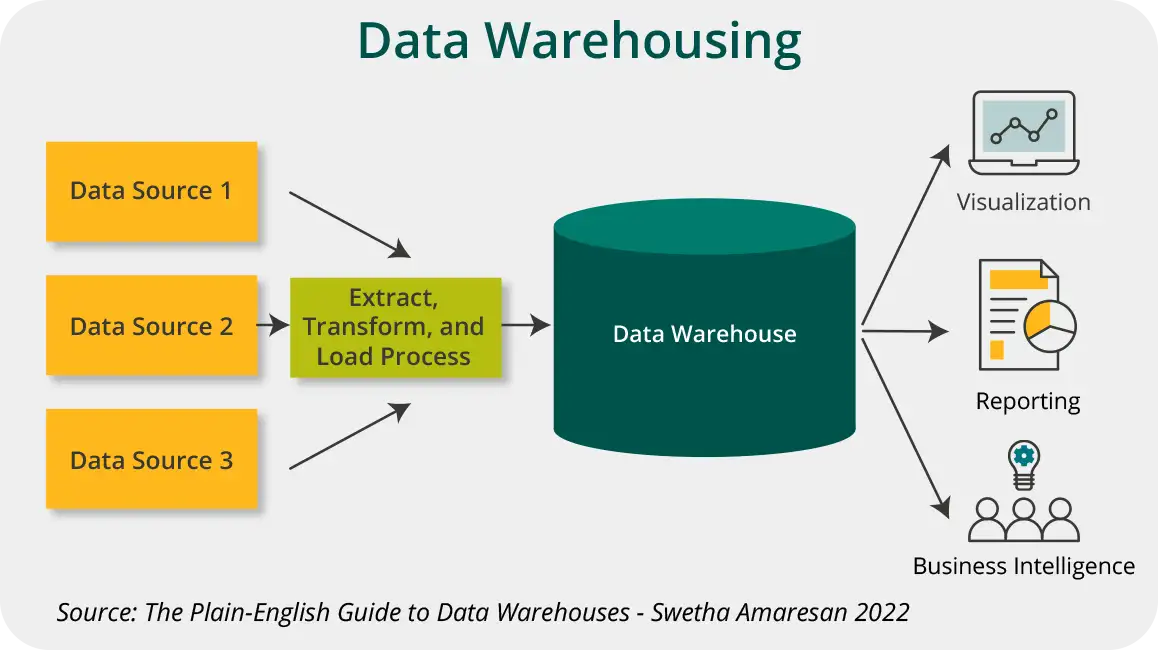Establishing a Data Warehouse Foundation for AEC Success

Data is your most valuable asset. But how effectively are you using it? While tools like Power BI offer incredible visualization capabilities, the true power lies in the foundation that feeds them. This is where a well-structured data warehouse becomes your firm’s competitive edge.
Inefficiencies can lead to significant wasted costs and missed opportunities. A well-designed data warehouse transforms scattered operational data into a trusted engine for insight, enabling faster, smarter decisions and positioning your firm one step ahead by accelerating your success.
What is a Data Warehouse?
Think of a data warehouse as a centralized, analytics-ready repository designed specifically to bring together large volumes of structured data from all your operational systems. Unlike the databases you use for day-to-day transactions, a data warehouse is built for querying and analysis. It provides your team with the ability to explore historical trends, surface hidden patterns, and pivot quickly with near-real-time insights, giving you a complete, real-time view of your firm’s performance.
Core Characteristics of a Data Warehouse:
- Integrated: A data warehouse pulls data from all your key sources, including your ERP (such as Deltek Vantagepoint or Ajera), CRM, spreadsheets, and other vital systems, bringing it all together in one cohesive place.
- Subject-Oriented: Data is organized around key business themes relevant to architecture, engineering, and consulting firms, such as projects, clients, sales, or finance, making it easier for your teams to access and understand.
- Time-Variant: A data warehouse maintains historical snapshots over months and years. This deep historical context is critical for understanding long-term trends and making informed strategic decisions.
- Non-Volatile: Once data is loaded, it remains largely unchanged, ensuring auditability and consistency for your analysis.

How Your Firm Can Use a Data Warehouse
The applications of a robust data warehouse within project-based firms are vast, directly supporting your strategic growth and operational excellence:
Dashboards and Operational Reporting
Get clear, accurate financial statements and operational reports you need, precisely when you need them, moving beyond delays and ensuring confidence in your numbers.
Data Mining and Ad-Hoc Discovery
Empower your teams to proactively explore data, identify anomalies, and uncover insights that drive new strategies.
Predictive and Prescriptive Analytics
Move beyond simply understanding what happened to anticipating what will happen and even recommending actions.
Long-Range, Strategic Decision-Making
With a comprehensive view of your firm’s performance over time, you can confidently plan for the future, whether it’s talent retention, market expansion, or capital investments.
Common Data Warehousing Technologies
To build these powerful solutions, leading technologies are often leveraged, including cloud SQL engines such as Snowflake, Amazon Redshift, and Azure Synapse, as well as robust ETL/ELT (Extract, Transform, Load/Extract, Load, Transform) platforms. like Talend, Informatica, Matillion, and dbt.
Why a Data Warehouse Matters
Implementing a data warehouse addresses many of the common pain points we hear from firm leaders and offers a multitude of benefits:
Enhanced Security
A data warehouse allows for restricting which data is loaded, with sensitive fields often excluded. Reports and BI tools can query the warehouse, rather than the production system, thereby reducing contention and risk. This also enables secure access for external contractors without compromising live databases.
Time Savings
A simplified, business-friendly schema speeds up learning and development for your team. Pre-aggregated tables and fewer joins significantly reduce query runtimes, and your production databases are only impacted during scheduled warehouse refreshes.
Performance Gains
Analytical workloads run on dedicated infrastructure, optimized specifically for read speed, ensuring your insights are delivered quickly.
Higher Data Quality
Your data warehouse serves as a single source of truth after cleansing and validation, ensuring accuracy and consistency across all reports and analyses. Changes happen once and propagate consistently.
Stronger Business Intelligence
It supports sophisticated queries across a smaller, more easily understood model and works seamlessly with any analytics or visualization tool, including Power BI. This decouples reporting from your ERP, so insights continue even if core systems change or you’ve outgrown QuickBooks.
Standardization & Reuse
Load scripts enforce consistent definitions across business units or clients, and reusable schemas accelerate deployments for similar organizations, a major advantage for platform firms or those involved in M&A.
Historical Preservation
Your data warehouse retains critical snapshots that may be purged from operational systems (like employee history) and provides an off-platform archive, which is essential if you ever migrate away from your current ERP.
Important Considerations Before You Build
While the benefits are clear, we believe in an anticipatory approach. Before embarking on a data warehouse project, it’s essential to plan for these factors:
Accelerate Your Success with a Data Warehouse
A well-architected data warehouse transforms scattered operational records into a trusted engine for insight, enabling faster, smarter decisions. We are deeply embedded in the AEC industry and have the depth of talent, including industry veterans, former AEC firm CFOs, and DCAA and GSA professionals, to guide you through this process.
Ready to explore what a data warehouse could do for your AEC firm? Our data solutions Subject Matter Experts are standing by to discuss the best path forward for your business – no cost, no obligation.
Please reach out to us to get started.



